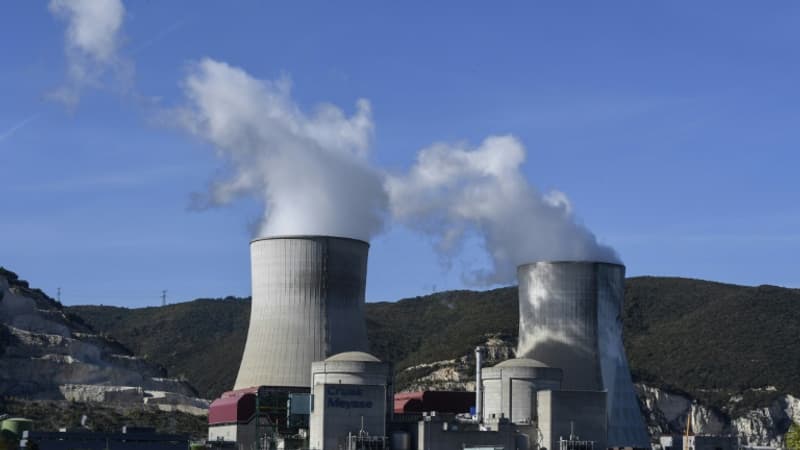We will still have to wait before we see the map of France in orange on the EcoWatt site. Last week, the drop in temperatures associated with the production of nuclear electricity not yet at its maximum level led the forecasts towards a first shot of the orange Ecowatt signal in the return of the weekend for the return of the French to the office .
The green color continues to predominate on the electricity weather forecast site, but RTE continues to consider a new consumption peak this Monday at the end of the day. The manager of the electricity transmission network even revised its forecasts upwards today with a maximum of 82.5 GW at 7:00 p.m. compared to 81.7 GW the day before. BFM Business takes stock of the various sources of supply that will help meet this increased demand.
Nuclear power is still in the majority
Looking in detail on the RTE website, the data reveals that electricity consumption already reached the symbolic threshold of 80 GW on Monday morning and remained above it almost continuously between 8 am and noon. “The distribution of electricity production between the different sectors should be substantially the same between this morning and this afternoon,” says the person in charge of the electricity transmission network.
The consumption peak in the morning was 80.8 MW at 10:15 am. At that time, nuclear reactors contributed 56% of electricity production in France with more than 41 GW thanks, in particular, to the restart of four infrastructures before the weekend. Behind, electricity imports from neighboring countries reached more than 13 GW just before the start of the consumption peak and then gradually fell below 7 GW in the morning. At the head of these countries are Germany and Belgium, which between them should supply more than a third of the electricity imported by France at 7:00 p.m. It is followed by England, which should export 3 GW of electricity to France, then Switzerland (less than 2 GW), Spain (1.75 GW) and Italy, just below the bar for one gigawatt exported.
The use of thermal power plants
The use of the two main levers of production, water and gas stocks, has also increased in recent days, which also explains the significant drop in gas reserves and the somewhat more contained drop in reservoir levels. By mid-morning, hydro production rose to over 16 GW (around 20%) thanks to the pumping and pumped power transfer (STEP) stations. For its part, the production of gas origin was close to 10 GW (around 13%). The latter is included, among other things, in the general production of thermal power plants that can also be fed with coal (1.8 GW produced) or fuel oil (1.4 GW produced).
Regarding the share of renewable energies, the morning sun made it possible to gradually increase the share of solar production from photovoltaic panels to 3.5 GW. But its contribution will be null from 5:00 p.m., unlike the wind energy production, which has been around 2 GW this morning. Finally, the bioenergy sector makes an even more modest contribution, just over 0.6 GW, thanks to biogas, solid biofuels, and household and paper waste.
Source: BFM TV


